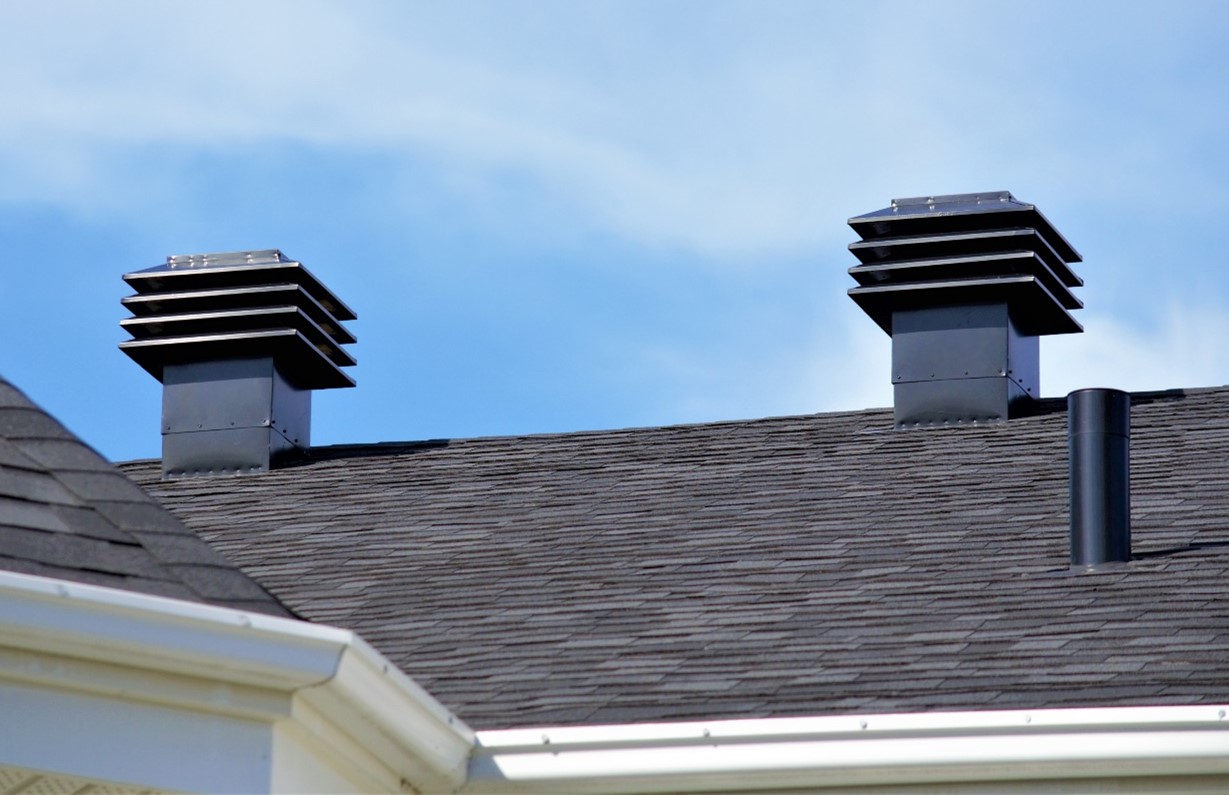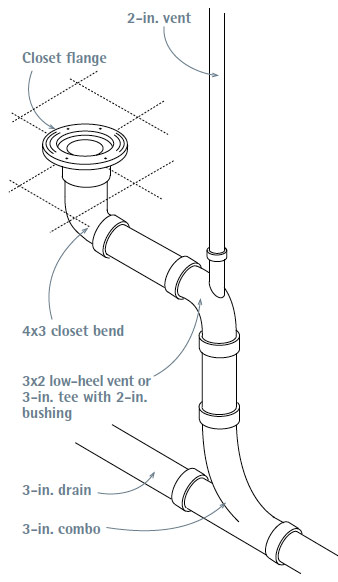Adequate Ventilation in Plumbing Systems: How It Matters
Adequate Ventilation in Plumbing Systems: How It Matters
Blog Article
Just about everyone seems to have their personal idea on the subject of Essential Plumbing Vent Pipes: Understanding Their Role.

Appropriate ventilation in pipes systems is often ignored, yet it is essential for preserving the capability and safety and security of your home's pipes. Ventilation aids manage air pressure, prevent the buildup of harmful gases, and ensure the efficient elimination of waste. In this guide, we will discover the significance of proper plumbing air flow, how it works, and the advantages it gives your pipes system.
Recognizing Air Flow in Plumbing
Ventilation in pipes describes the network of pipes that permit air to move through the water drainage system. These vents serve numerous objectives, including managing air pressure within the pipelines, avoiding sewer gases from getting in the home, and aiding in the smooth flow of wastewater.
Exactly How Air Flow Works in Pipes Systems
Air Pressure Regulation
Correct air flow keeps well balanced atmospheric pressure within the plumbing system. When water flows with pipes, it displaces air. Without appropriate air flow, this variation can produce negative pressure, resulting in slow down drains or siphoning of water from traps, which can trigger undesirable odors to leak into the home.
Preventing Sewer Gas Accumulation
One of one of the most essential features of plumbing vents is to avoid sewage system gases, such as methane and hydrogen sulfide, from building up within the home. These gases can posture significant health and wellness risks and are extremely flammable. Vent pipelines allow these gases to escape securely outdoors.
Assisting in Waste Removal
Air flow helps in the reliable elimination of wastewater by preventing airlocks in the water drainage system. When air can move freely via the vents, it allows water and waste to flow efficiently through the pipelines, reducing the threat of blockages and backups.
Types of Plumbing Vents
Main Stack Vent
The primary stack air vent, additionally referred to as the vent stack, is the main vent in a plumbing system. It expands from the major drain align through the roof covering, enabling gases to leave and fresh air to enter the system.
Branch Vent
Branch vents attach to the main stack vent and offer specific fixtures, such as sinks, bathrooms, and showers. These vents ensure that each fixture has sufficient air flow to operate correctly.
Air Admission Shutoff (AAV).
An Air Admittance Shutoff (AAV) is a one-way shutoff that allows air to enter the pipes system without the demand for a standard vent pipeline expanding via the roofing system. AAVs are generally used in remodellings or locations where setting up a basic vent is impractical.
Signs of Poor Ventilation in Plumbing.
Slow Draining Fixtures.
If your sinks, tubs, or toilets are draining pipes gradually, maybe an indicator of bad ventilation. Inadequate air circulation can develop a vacuum cleaner result, making it challenging for water to drain pipes properly.
Gurgling Sounds.
Gurgling noises originating from drains pipes are typically an outcome of air being sucked through water traps because of adverse stress in the pipes. This is a clear sign of not enough ventilation.
Undesirable Smells.
Drain smells inside your home are a warning that your plumbing system is not effectively ventilated. This can imply that sewage system gases are not being effectively aired vent outside, resulting in possibly hazardous conditions.
Typical Air Flow Blunders.
Poor Vent Sizing.
Using undersized vent pipes can bring about poor air circulation and pressure discrepancies in the system. It's necessary to utilize vents that fulfill the details needs of your pipes system.
Improper Vent Positioning.
Positioning vents too much from the fixtures they serve can lower their efficiency. Appropriate placement makes sure that air can stream easily and effectively with the system.
Disregarding Code Requirements.
Building ordinance give specific standards for pipes ventilation. Neglecting these codes can lead to a system that falls short to operate properly and might lead to pricey repair work or carcinogen.
Benefits of Correct Ventilation.
Boosted System Efficiency.
Appropriately aerated pipes systems run much more effectively, with fewer clogs, faster draining pipes, and much less stress on the pipelines. This effectiveness extends the life-span of the plumbing system.
Improved Air Top Quality.
By stopping drain gases from entering your home, proper air flow contributes to much better indoor air quality, making your living environment healthier and much more comfy.
Protecting Against Water Damages.
Adequate air flow aids prevent water from being siphoned out of traps, which can lead to sewer gases getting in the home and creating water damages in time.
Actions to Make Sure Proper Ventilation.
Consulting Plumbing Codes.
Always speak with neighborhood pipes codes when making or changing your plumbing system. These codes supply the needed standards for correct airing vent and ensure your system meets security requirements.
Regular Examination and Upkeep.
Regular examinations can aid determine potential ventilation problems before they come to be major issues. Maintenance tasks, such as cleaning air vent pipelines and checking for clogs, are important for keeping the system in good working order.
Professional Installment.
For brand-new installments or significant alterations, it's smart to hire a specialist plumber. They have the expertise to make certain the ventilation system is appropriately designed and set up according to code.
Final thought.
Appropriate ventilation is a crucial component of any type of pipes system, ensuring that it functions efficiently and securely. By comprehending the importance of ventilation, recognizing the signs of bad air flow, and taking actions to preserve your system, you can prevent costly issues and safeguard your home's air high quality.
4 Things You Should Know About Your Plumbing Vents
What Plumbing Vents Are
Also called a vent stack, a plumbing vent is a vertical pipe attached to your drain line that runs through your roof. The plumbing vent pipe, or plumbing air vent, removes gas and odors from your plumbing system and allows fresh air to enter the pipes, helping the water to flow out of the drain pipes.
What Plumbing Vents Do
Plumbing vents have two basic functions. One of which is to allow unpleasant smelling wastewater and sewer gasses to escape your plumbing system instead of entering your home. Plumbing vent pipes are typically located on roofs, away from windows, to ensure the fumes exit the home completely.
The other function of the plumbing vent is to move fresh air into your plumbing system. This helps move water through every plumbing fixture in your house, like toilets and sink drains. Think of the way in which you need to let a little air into the bottle as you pour soda in order to make the drink flow smoothly.
Different Types of Plumbing Vents
True vent: This is the most common vent option. In simplest terms, a true vent is a vertical pipe attached to your drain line that exits through the roof. They often function as the main vent that other fixtures can connect to. Re-vent pipe or auxiliary vent: Attached to the drain line near specific plumbing fixtures, re-vent pipes run up and over to connect to the main vent. Common vent: Two plumbing fixtures installed on opposite sides of a wall are typically tied into the vent stack using something known as a sanitary cross. Wet vent: This venting option operates as a drain pipe and a vent at the same time. Wet vent drainage systems drain water from one fixture while venting the air from another. Although they’ve been used for over 100 years, wet vent systems have only recently been added to the plumbing code in many areas. If you’re planning on installing one in a bathroom remodel, make sure you check your local code prior to construction. Loop vent: For free-standing fixtures like kitchen island sinks, loop vents are ideal. These vent pipes run under the floor, rise from the P-trap, and create a loop inside the cabinet sink. Air admittance valve: An AAV is a one-way mechanical valve typically installed at the site of the plumbing fixture. AAVs allow venting to occur without having to tie into a larger venting system. They’re ideal for venting fixtures where you aren’t able to easily connect to an existing vent system. Common Plumbing Vent Issues
Although vent pipes typically don’t have water flowing through them, they’re still subject to many typical plumbing issues. For example, clogs are one of the most common problems associated with sewer vent pipes. If your vent pipe gets clogged, all of your plumbing fixtures tied into the vent stack will be affected.
A sink with a slow drain that bubbles and gurgles or a strong sewage smell around your toilet are both indicators that your toilet vent pipe is clogged. Because most vent pipes exit through the roof, old leaves, twigs or even a bird’s nest could be clogging the pipe.
Clogs in your vent pipe system cause a buildup of negative pressure, meaning that water won’t be able to flow out of your home very well. It’s similar to putting your finger over the opening of a straw to trap water inside. When you remove your finger, the water is able to flow out of the straw.
If you suspect you have any blockage in your vent, make sure you have a professional come examine the situation. Left unchecked, a blocked air vent can lead to other costly repairs, like leaks and sediment buildup.
Under Pressure
Pipe vents are essential aspects of a home’s plumbing system. Owning a home means learning about all sorts of things you never put much thought into before. But by understanding as much as you can about the important systems of your home, you can keep those budgets intact and those anxiety levels low.
https://www.homeserve.com/en-us/blog/home-improvement/plumbing-vents/

I came across that piece of writing on Why Plumbing Air Vents Are Important while doing a lookup on the search engines. Do you know about anybody else who is serious about What Is A Plumbing Vent & How Do They Work?? Feel free to promote it. I am grateful for being here. Kindly come by our site back soon.
Booking Page Report this page